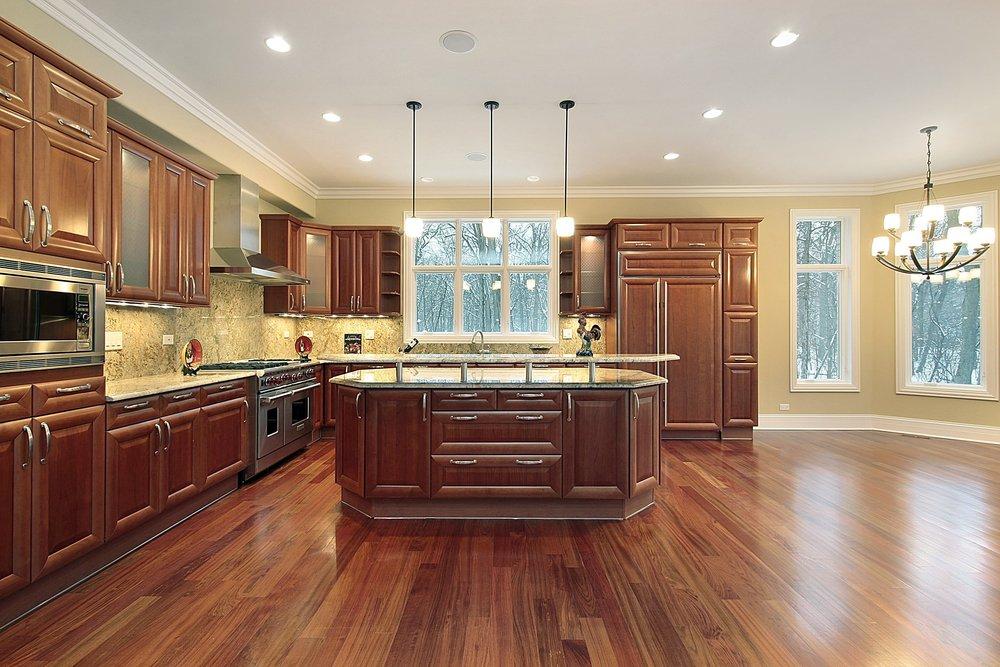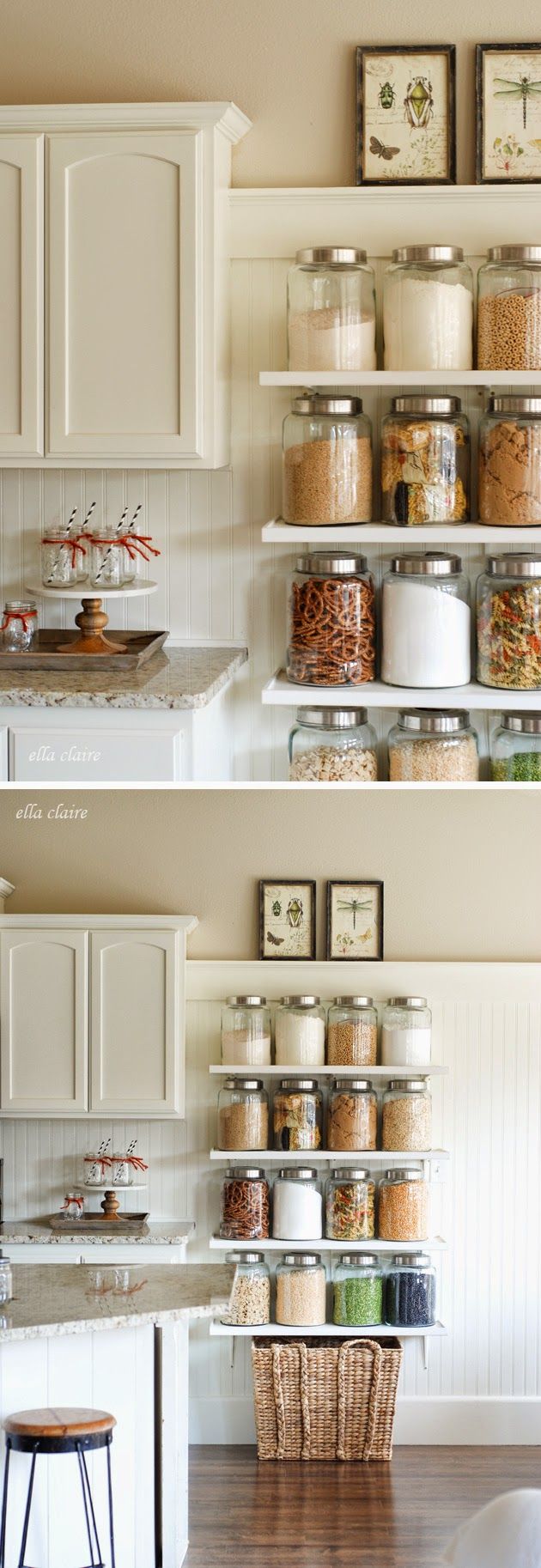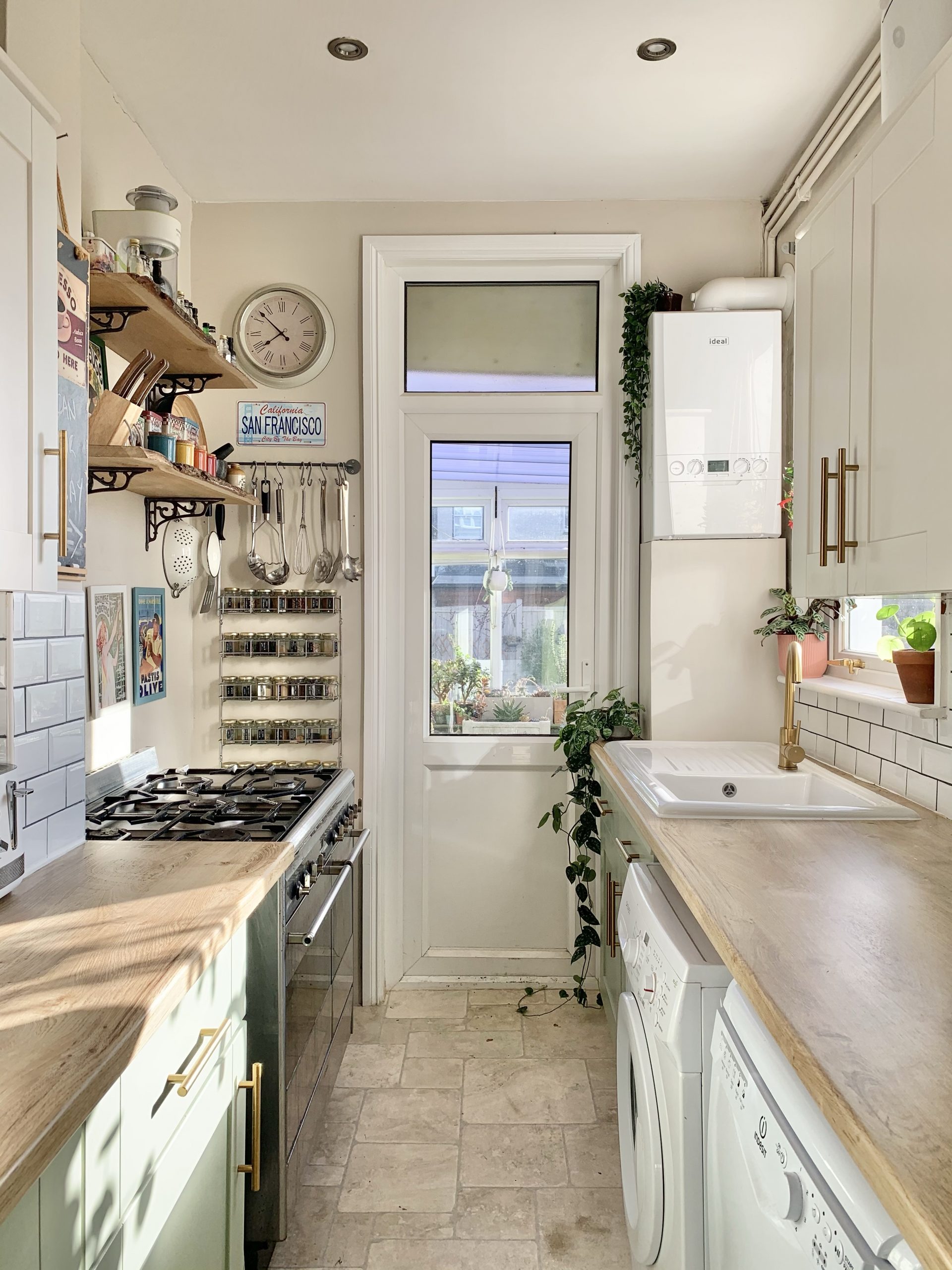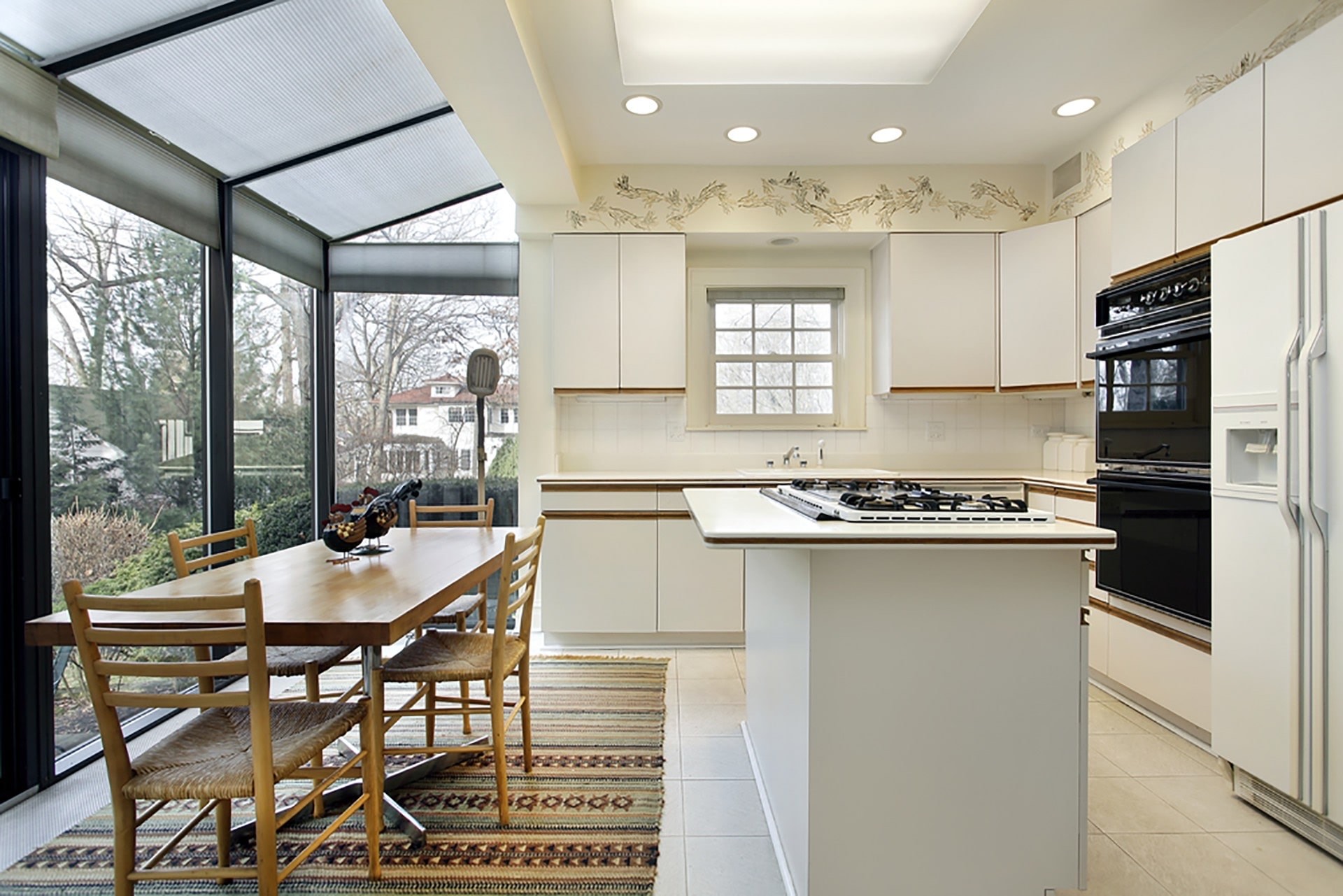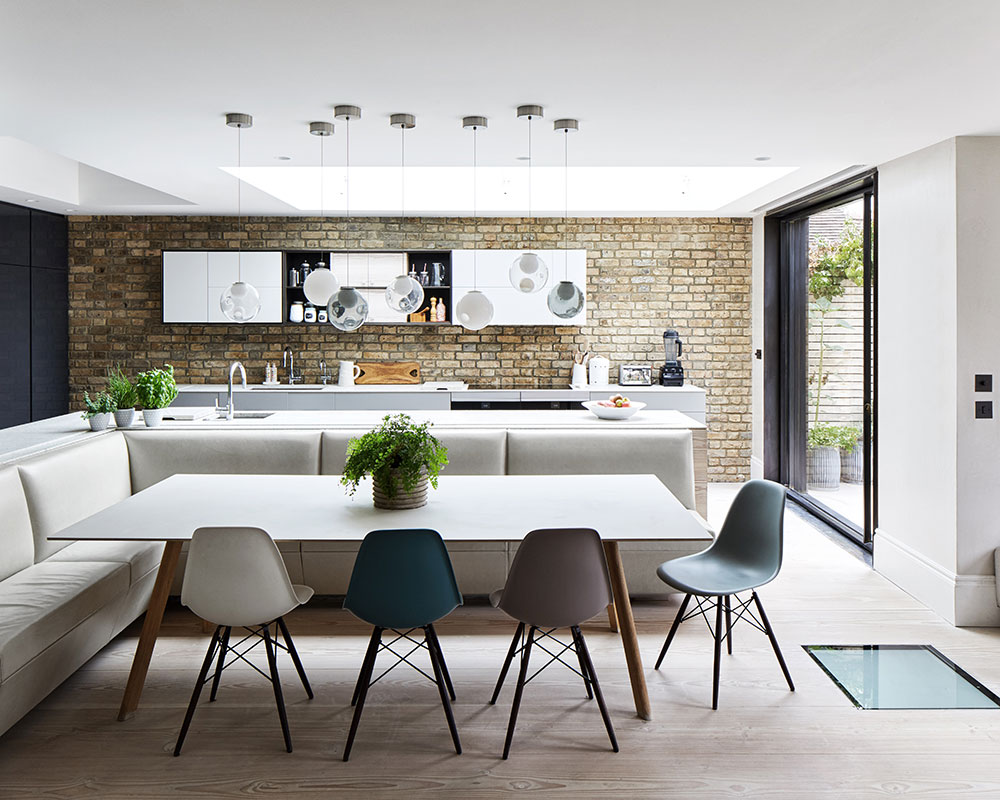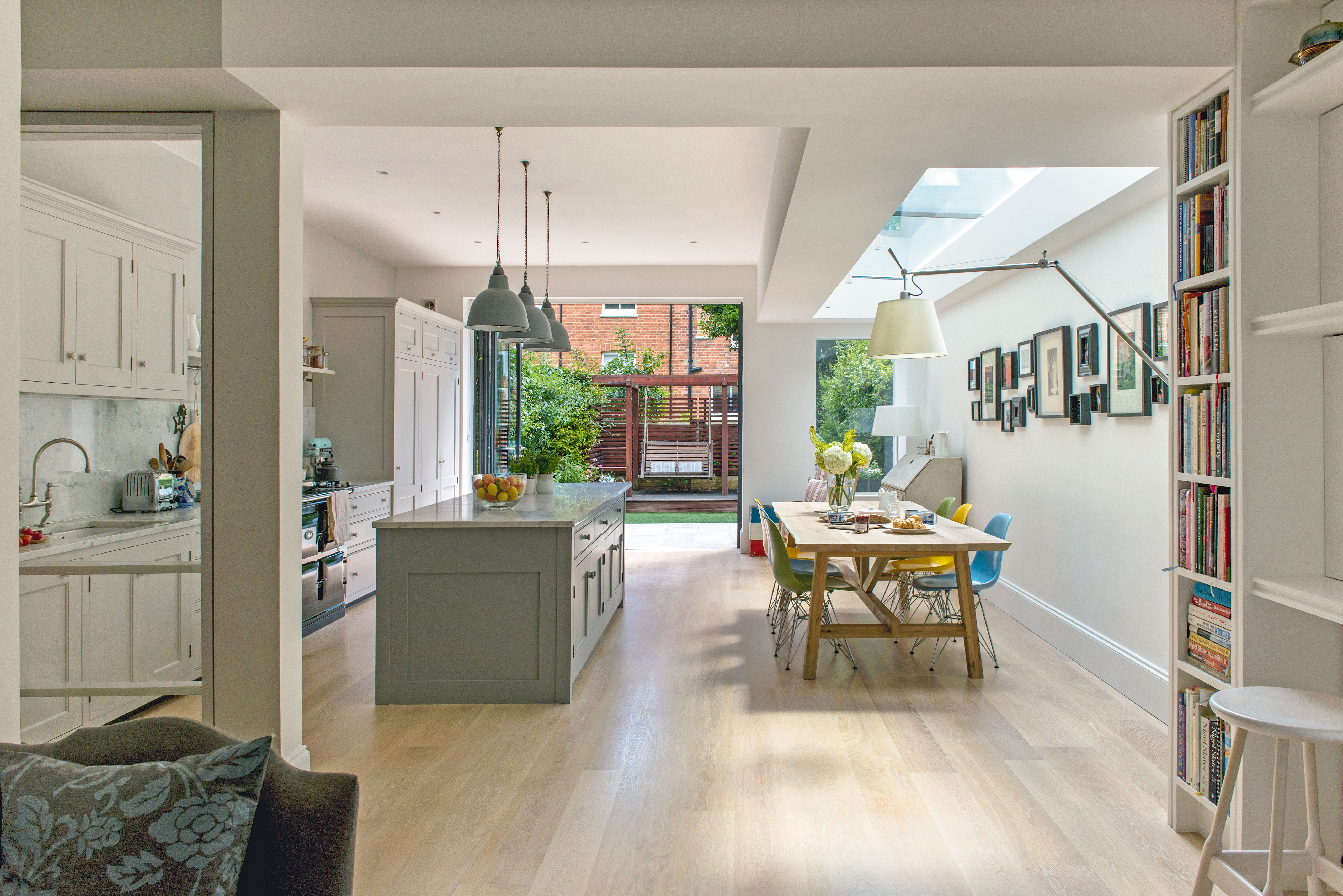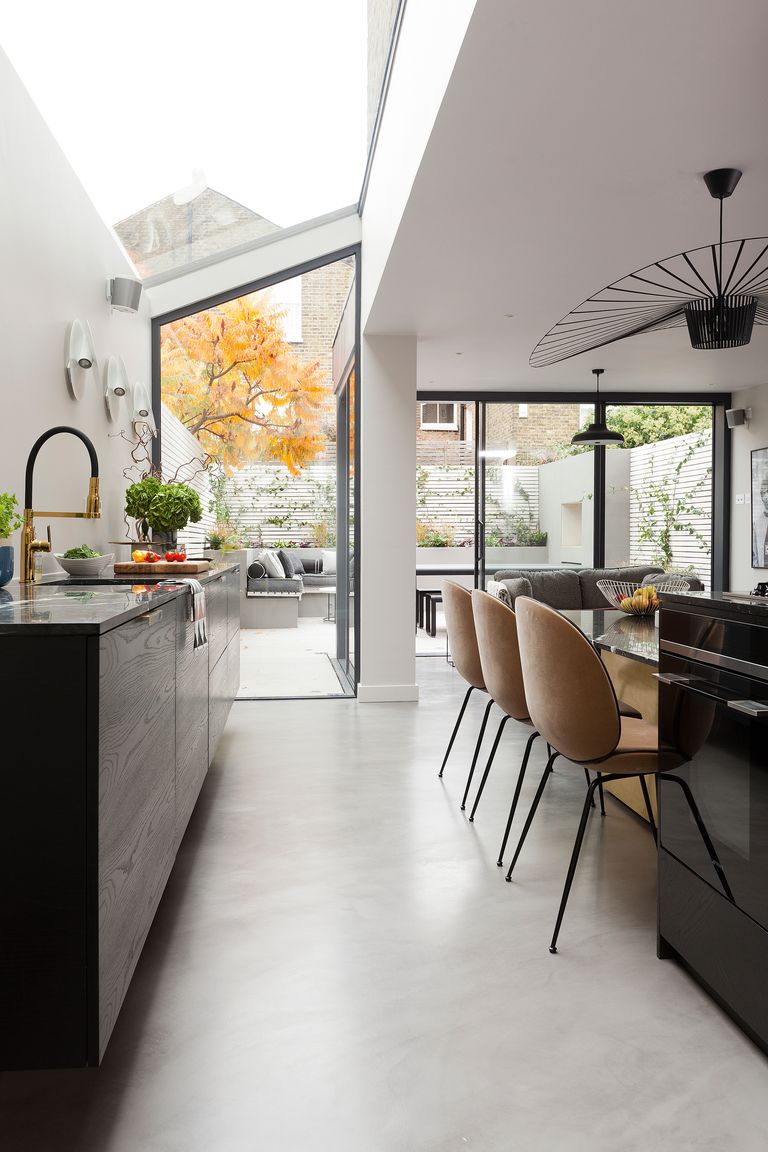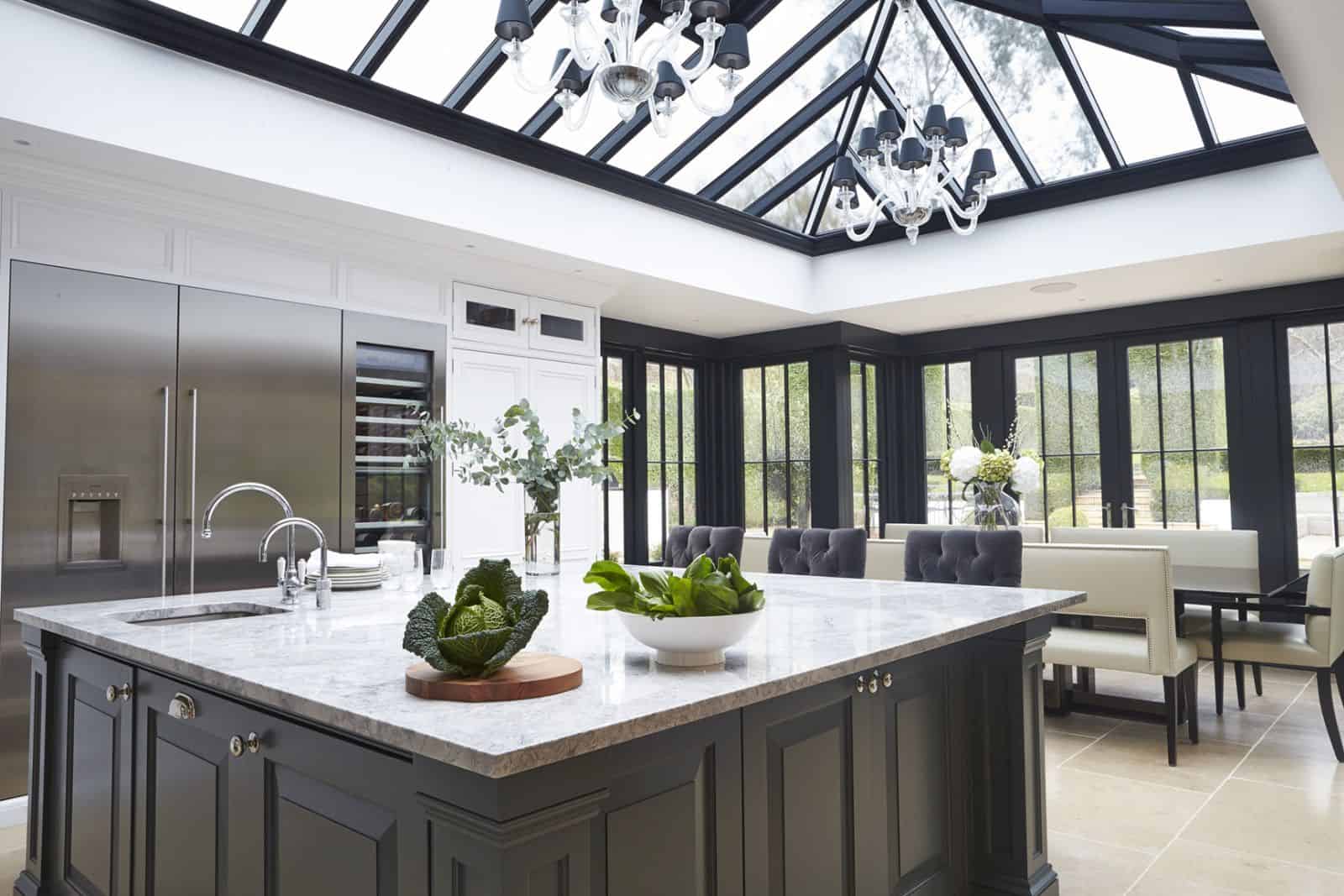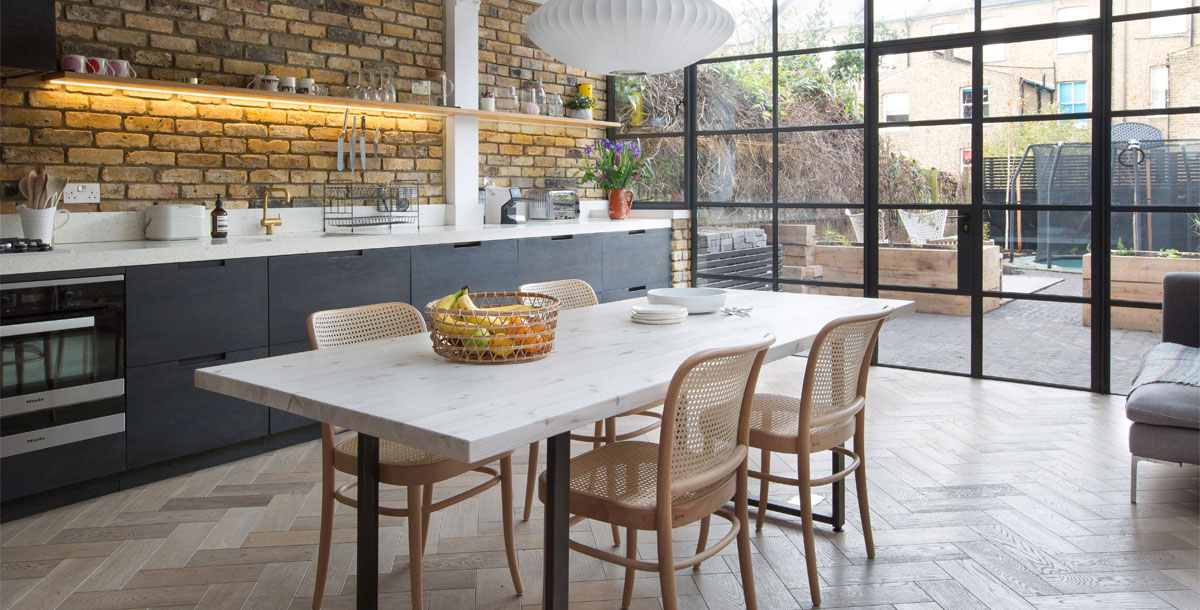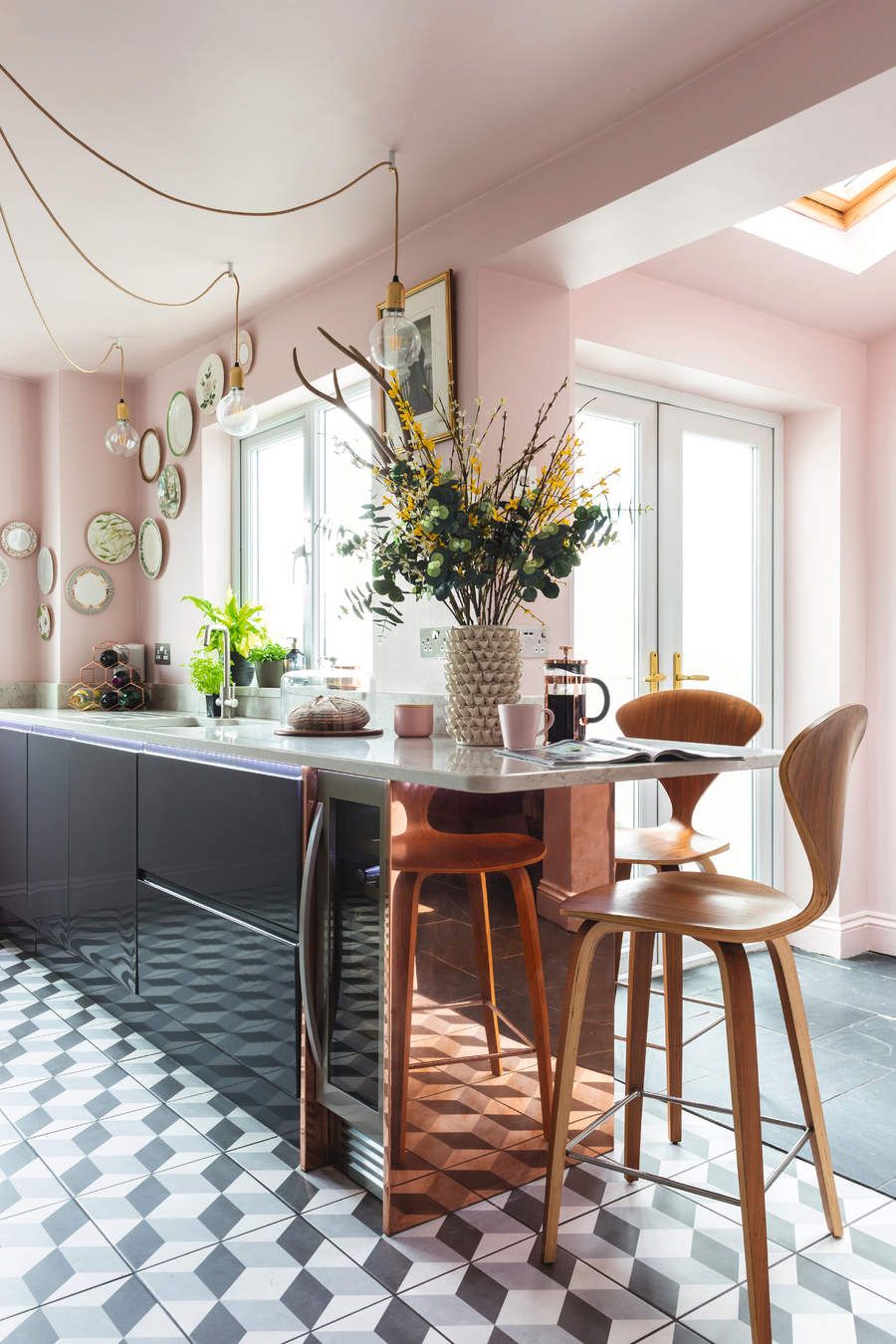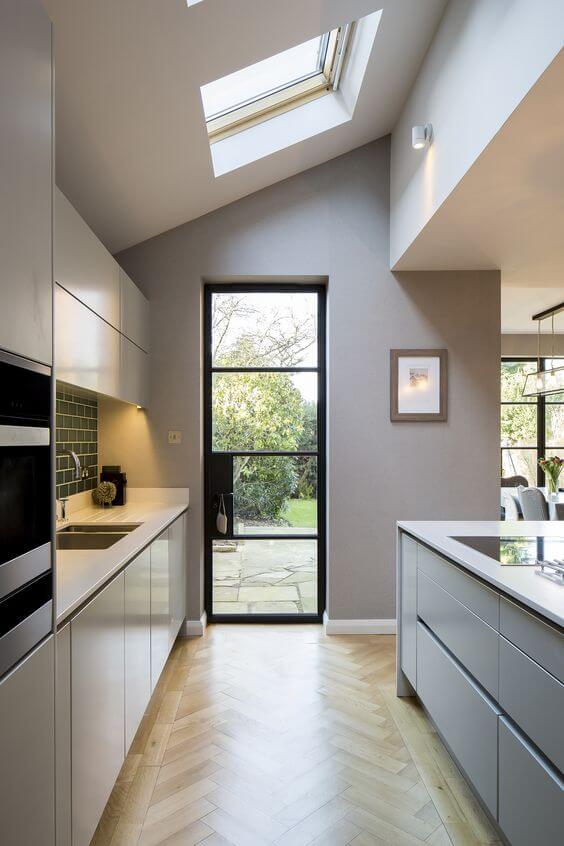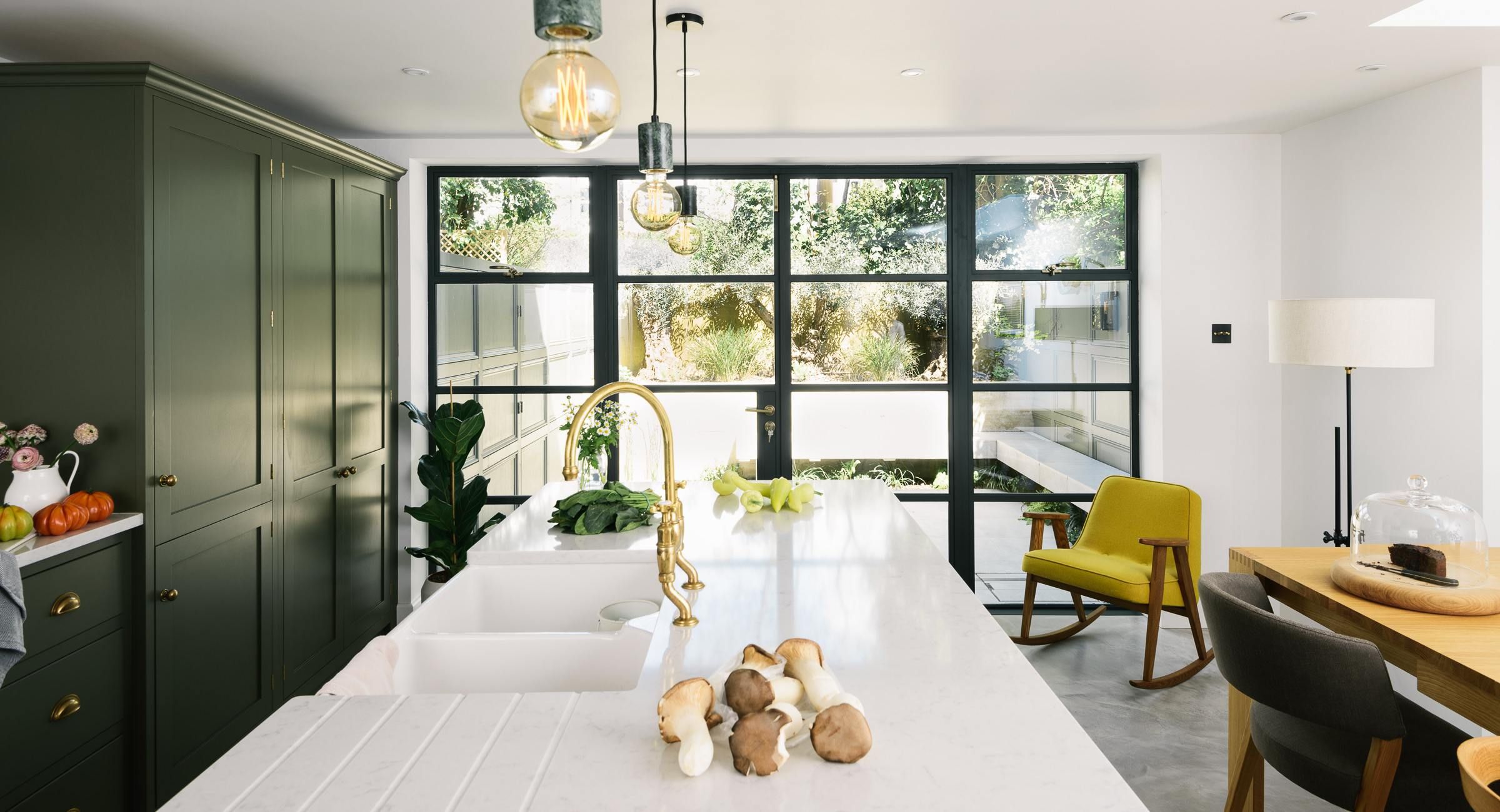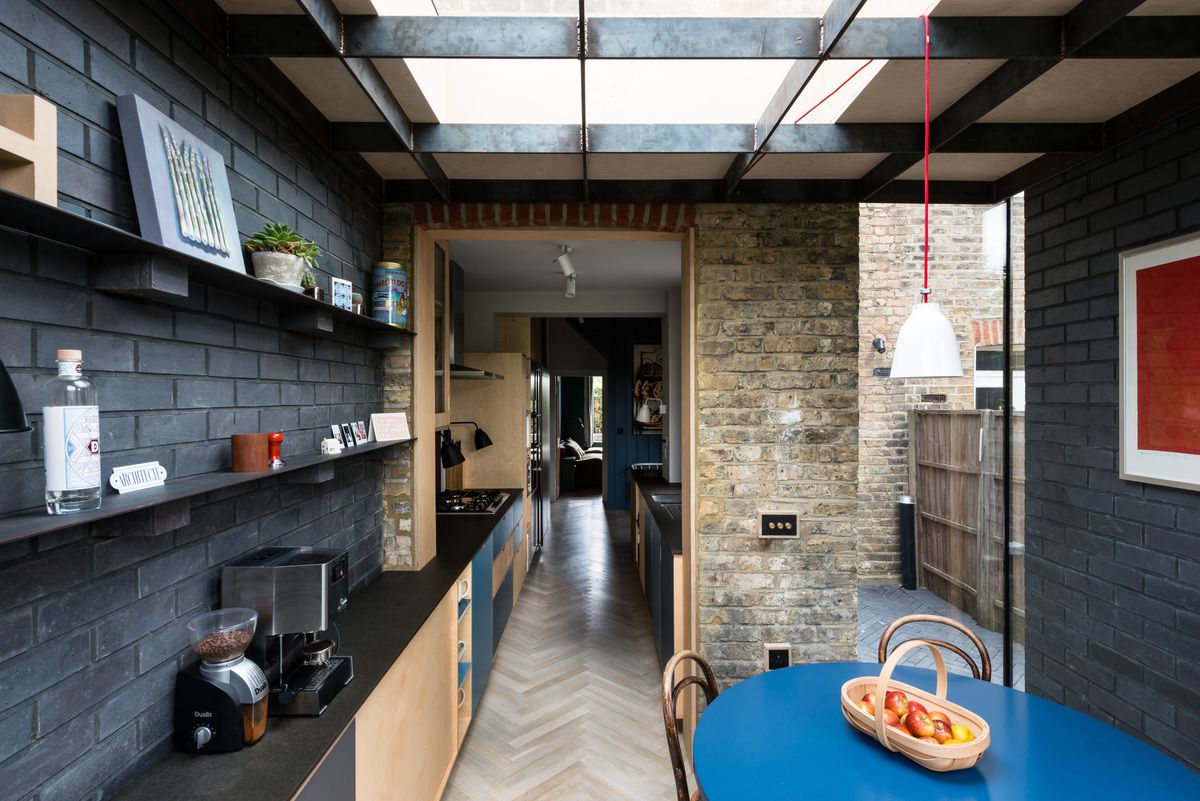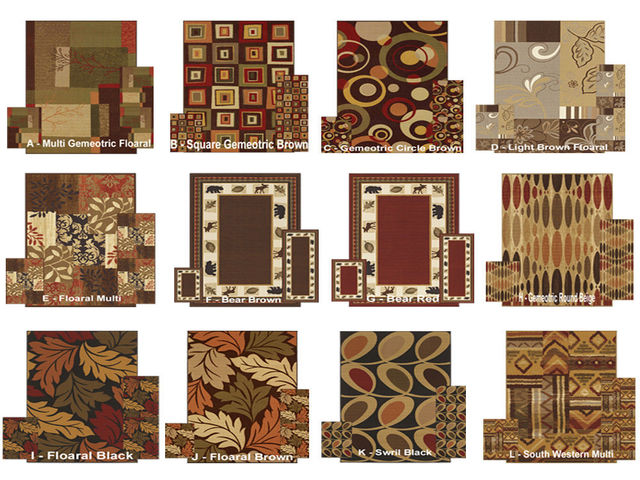1. Kitchen Extension Design Ideas
If you're thinking about adding an extension to your kitchen, you're in luck. There are endless design ideas and possibilities to make your dream kitchen extension a reality. Whether you want to create a cozy breakfast nook, a spacious open-concept kitchen, or a luxurious chef's kitchen, there are plenty of design options to choose from.
One popular design idea for a kitchen extension is to create a seamless transition between your indoor and outdoor space. This can be achieved by installing large glass doors or windows that open onto a patio or deck. This allows natural light to flood into your kitchen and creates a beautiful, airy feel.
Another design idea is to incorporate a kitchen island into your extension. This not only adds extra counter and storage space, but it also serves as a focal point for the room. You can also add bar seating around the island to create a casual dining area.
No matter what design ideas you choose, make sure to incorporate your personal style and needs into the design to create a space that is both functional and aesthetically pleasing.
2. How to Design Your Own Kitchen Extension
Designing your own kitchen extension can be a daunting task, but with the right guidance, it can be a rewarding experience. The first step is to determine your budget and what you want to achieve with your extension. Do you want to create more space for cooking and entertaining, or do you want to add value to your home?
Next, consider the layout and flow of your kitchen. Think about how you use your kitchen and what areas need improvement. Do you need more counter space or storage? Do you want to incorporate a dining area or a breakfast nook?
Once you have a clear idea of your goals and needs, it's time to start planning the design. You can consult with a professional designer or use online design software to visualize your ideas. Make sure to incorporate your personal style and choose materials and finishes that will complement the rest of your home.
3. DIY Kitchen Extension Design Tips
If you're on a tight budget and have some DIY skills, you may consider designing and building your kitchen extension yourself. While this may seem like a daunting task, there are some tips to make the process easier.
First, make sure to obtain all necessary permits and permissions before starting any construction. Next, do your research and educate yourself on building codes and regulations. This will ensure that your extension is safe and up to code.
When it comes to design, keep it simple and stick to your budget. Choose materials and finishes that are cost-effective and easy to work with. You can also save money by doing some of the work yourself, such as painting or installing cabinets.
Remember, the key to a successful DIY kitchen extension is proper planning and taking your time to do things correctly. Don't rush the process and seek advice from professionals if needed.
4. Designing a Kitchen Extension on a Budget
Designing a kitchen extension doesn't have to break the bank. With some creativity and strategic planning, you can create a beautiful and functional space on a budget.
The first step is to prioritize your needs and wants. Do you need to expand your kitchen to accommodate a growing family, or do you simply want to update the look of your kitchen? This will help you determine where to allocate your budget.
Next, shop around for budget-friendly materials and finishes. You can also save money by opting for semi-custom or ready-to-assemble cabinets instead of custom-made ones. Be open to alternative materials and consider repurposing items to add character to your kitchen extension.
Remember, a well-designed kitchen extension doesn't have to be expensive; it just needs to be well-planned and executed. Don't be afraid to get creative and think outside the box to stay within your budget.
5. Kitchen Extension Design Software
If you're not sure where to start with your kitchen extension design, consider using design software. There are many free and paid options available that allow you to visualize your ideas in 3D and make changes easily.
Some software even offers pre-designed kitchen layouts and allows you to input your specific measurements and customize the design. This can save time and help you avoid costly mistakes during the construction process.
Whether you're a novice or experienced designer, using software can help you experiment with different layouts, materials, and finishes to find the perfect design for your kitchen extension. You can also share your designs with professionals or contractors to get their input and make any necessary adjustments.
6. Steps to Designing Your Own Kitchen Extension
Designing your own kitchen extension may seem overwhelming, but breaking the process down into steps can make it more manageable.
The first step is to assess your current kitchen and determine your goals and needs for the extension. Next, create a budget and a rough timeline for the project. Then, start researching and gathering ideas for your design.
Once you have a clear idea of your design, it's time to start planning and drawing up plans. You can use design software or consult with a professional to help create detailed plans and blueprints.
Next, obtain any necessary permits and permissions before starting construction. Then, gather materials and hire contractors if needed. Finally, take your time and pay attention to details to ensure a successful and well-designed kitchen extension.
7. Kitchen Extension Design Checklist
Designing a kitchen extension involves many elements, and it's crucial to keep track of them to ensure a smooth and successful project. Here is a basic checklist to follow when designing your kitchen extension:
- Determine your budget and goals for the extension
- Create a rough timeline for the project
- Assess your current kitchen and identify areas for improvement
- Gather design ideas and inspiration
- Use design software or consult with a professional to create detailed plans and blueprints
- Obtain necessary permits and permissions
- Purchase materials and hire contractors if needed
- Take your time and pay attention to details during the construction process
Following this checklist can help you stay organized and on track while designing your kitchen extension.
8. Designing a Modern Kitchen Extension
If you have a modern home, you may want to extend your kitchen to match its style. Some design elements to consider for a modern kitchen extension include clean lines, minimalistic features, and a neutral color palette.
You can achieve a modern look by using materials such as stainless steel, glass, and concrete. You can also incorporate sleek and simple cabinetry and countertops. Don't be afraid to mix and match textures and finishes to add visual interest to your modern kitchen extension.
Lighting is also crucial in a modern kitchen extension. Consider installing recessed lighting and pendant lights to create a bright and airy feel. You can also add a statement light fixture above the kitchen island for a touch of elegance.
9. Kitchen Extension Design Inspiration
It can be challenging to come up with design ideas for your kitchen extension, but there are many sources of inspiration to help you get started. You can browse home design magazines, visit showrooms, or search online for kitchen extension designs.
You can also get inspiration from your own home. Look for design elements that you love in other areas of your home and incorporate them into your kitchen extension. Don't be afraid to mix and match styles and materials to create a unique and personal space.
Remember, the key is to find a design that reflects your personal style and meets your needs and goals for your kitchen extension. Take your time and gather inspiration to help guide you in the design process.
10. Designing a Small Kitchen Extension
If you have a small kitchen, you may think that an extension is out of the question. However, with careful planning and design, you can create a functional and visually appealing space.
One design tip for a small kitchen extension is to maximize storage and counter space. This can be achieved by using vertical space and incorporating hidden storage options, such as pull-out cabinets and shelves.
You can also create the illusion of more space by using light colors and natural lighting. Consider installing large windows or skylights to bring in natural light and make the space feel bigger. Be strategic with your design choices and avoid clutter to create an open and airy feel in your small kitchen extension.
Designing a kitchen extension can be a fun and exciting project. With these tips and ideas, you can create a functional and beautiful space that meets your needs and reflects your personal style. Remember to take your time and plan carefully to ensure a successful and well-designed kitchen extension.
How to Design Your Own Kitchen Extension

Create a Detailed Plan
 When it comes to designing your own kitchen extension, the first step is to have a detailed plan in place. This involves considering the layout, size, and functionality of the space. Think about what you want to achieve with your extension – do you want more storage, a larger dining area, or a better flow between the kitchen and the rest of the house? Consider your budget and how much you are willing to spend on materials and professional help. Sketch out your ideas and make a list of all the necessary elements that need to be incorporated into the design.
When it comes to designing your own kitchen extension, the first step is to have a detailed plan in place. This involves considering the layout, size, and functionality of the space. Think about what you want to achieve with your extension – do you want more storage, a larger dining area, or a better flow between the kitchen and the rest of the house? Consider your budget and how much you are willing to spend on materials and professional help. Sketch out your ideas and make a list of all the necessary elements that need to be incorporated into the design.
Choose the Right Style
 The style of your kitchen extension should complement the existing design of your home. You can choose to go for a modern, contemporary look or opt for a more traditional style. Consider the overall aesthetic of your house and choose a style that will seamlessly blend in. This will ensure that your kitchen extension adds value to your home and doesn't look out of place.
The style of your kitchen extension should complement the existing design of your home. You can choose to go for a modern, contemporary look or opt for a more traditional style. Consider the overall aesthetic of your house and choose a style that will seamlessly blend in. This will ensure that your kitchen extension adds value to your home and doesn't look out of place.
Maximize Natural Light
 Natural light is an important aspect of any kitchen, and it becomes even more crucial when it comes to designing an extension. Make the most of the available natural light by incorporating large windows, skylights, or even a glass roof. This will not only make your kitchen look more spacious and inviting but also reduce the need for artificial lighting during the day.
Natural light is an important aspect of any kitchen, and it becomes even more crucial when it comes to designing an extension. Make the most of the available natural light by incorporating large windows, skylights, or even a glass roof. This will not only make your kitchen look more spacious and inviting but also reduce the need for artificial lighting during the day.
Consider Functionality
 When designing your own kitchen extension, it's important to think about functionality. The layout should be practical and efficient, with easy access to all the necessary areas such as the sink, stove, and refrigerator. Consider the placement of appliances, cabinets, and countertops to ensure a smooth workflow in the kitchen. It's also a good idea to incorporate a kitchen island or breakfast bar for added functionality and extra seating.
When designing your own kitchen extension, it's important to think about functionality. The layout should be practical and efficient, with easy access to all the necessary areas such as the sink, stove, and refrigerator. Consider the placement of appliances, cabinets, and countertops to ensure a smooth workflow in the kitchen. It's also a good idea to incorporate a kitchen island or breakfast bar for added functionality and extra seating.
Don't Forget About Storage
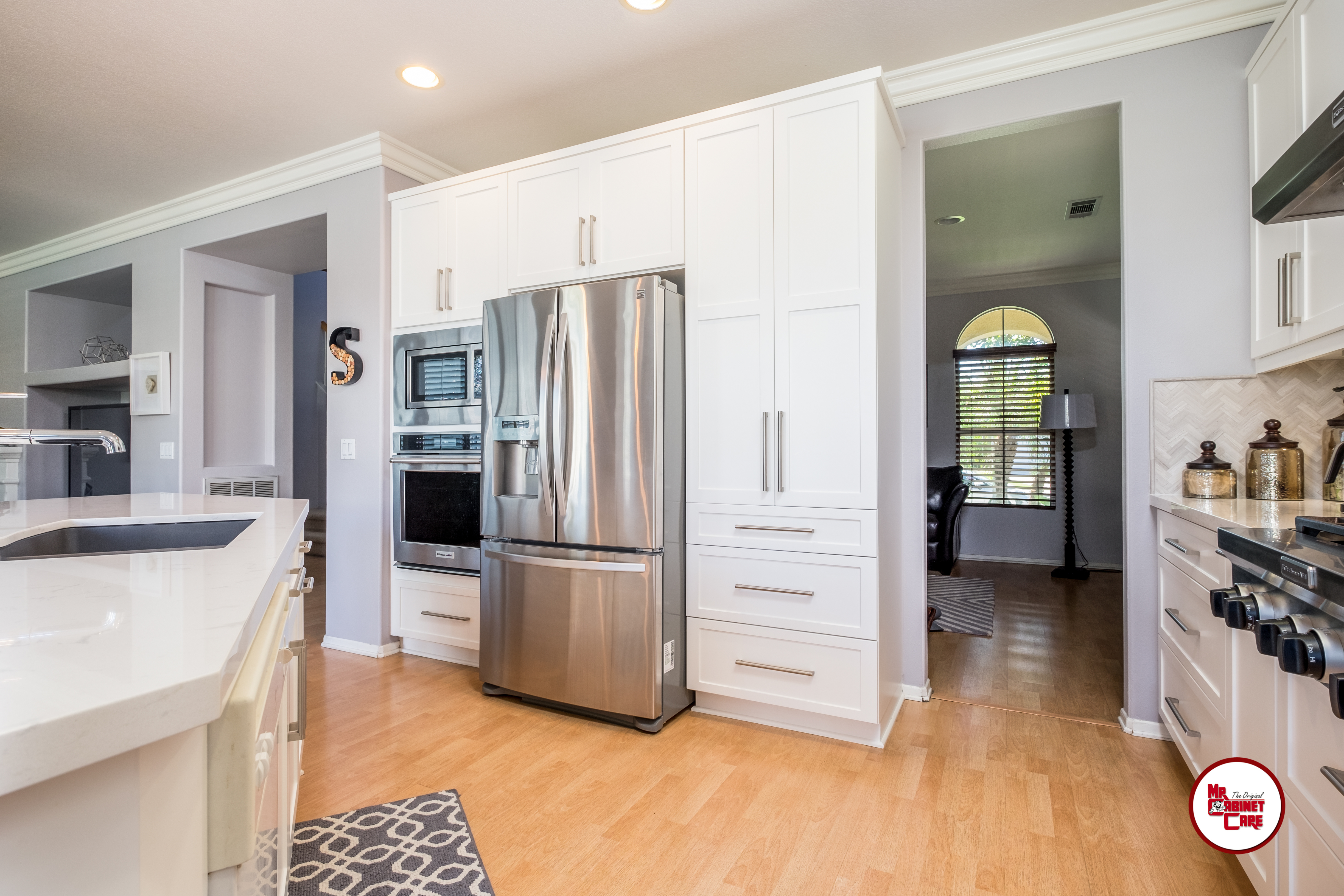 Storage is a crucial element in any kitchen, and it's even more important in an extension where you want to maximize space. Consider incorporating built-in cabinets, shelves, and drawers to make the most of the available space. You can also get creative with storage solutions such as pull-out pantry shelves, hidden storage compartments, and overhead racks for pots and pans.
In conclusion,
designing your own kitchen extension requires careful planning, consideration of style and functionality, and the use of natural light and storage solutions. By following these tips, you can create a beautiful and functional kitchen space that adds value to your home. Don't be afraid to seek professional help if needed, and always keep your budget in mind. With the right approach, you can design the kitchen extension of your dreams.
Storage is a crucial element in any kitchen, and it's even more important in an extension where you want to maximize space. Consider incorporating built-in cabinets, shelves, and drawers to make the most of the available space. You can also get creative with storage solutions such as pull-out pantry shelves, hidden storage compartments, and overhead racks for pots and pans.
In conclusion,
designing your own kitchen extension requires careful planning, consideration of style and functionality, and the use of natural light and storage solutions. By following these tips, you can create a beautiful and functional kitchen space that adds value to your home. Don't be afraid to seek professional help if needed, and always keep your budget in mind. With the right approach, you can design the kitchen extension of your dreams.













